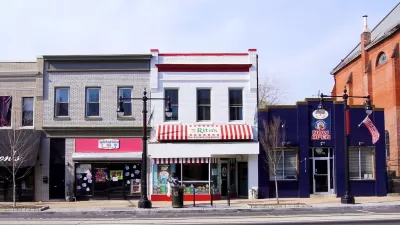A higher share of Americans are renters than at any point in decades. Neighborhoods all over the country, especially in downtowns, have many more renters than they did in 2010.

Recent analysis by RentCafe sheds light on how the growing share of renters in the U.S. population—a trend reflected in national statistics for years now—is transforming neighborhoods.
According to this analysis which uses the latest data from the U.S. Census Bureau, 101 U.S. zip codes switched to majority renter in the past decade. An article by Andrea Neculae for RentCafe provides more details on the analysis, including infographics to reflect the trends and locate the parts of the country with most new majority renter neighborhoods.
Philadelphia has the most new majority renter zip codes of any U.S. city, with seven, followed by Memphis and Houston, each with six. The analysis also ranked zip codes by the percentage of change in the number of renters. The 43240 zip code in Columbus, Ohio leads the list with a 157 percent change, followed by 60606 in Chicago and 78256 in San Antonio, with 151 percent and 132 percent, respectively.
The analysis notes that downtown areas, in particular, became more popular for young renters over the past decade—as reflected in the zip codes with the largest changes in renter populations since 2010.
FULL STORY: Renting Out the Neighborhood: 101 Zip Codes Switch From Homeowner to Renter Majority

Alabama: Trump Terminates Settlements for Black Communities Harmed By Raw Sewage
Trump deemed the landmark civil rights agreement “illegal DEI and environmental justice policy.”

Planetizen Federal Action Tracker
A weekly monitor of how Trump’s orders and actions are impacting planners and planning in America.

Why Should We Subsidize Public Transportation?
Many public transit agencies face financial stress due to rising costs, declining fare revenue, and declining subsidies. Transit advocates must provide a strong business case for increasing public transit funding.

Understanding Road Diets
An explainer from Momentum highlights the advantages of reducing vehicle lanes in favor of more bike, transit, and pedestrian infrastructure.

New California Law Regulates Warehouse Pollution
A new law tightens building and emissions regulations for large distribution warehouses to mitigate air pollution and traffic in surrounding communities.

Phoenix Announces Opening Date for Light Rail Extension
The South Central extension will connect South Phoenix to downtown and other major hubs starting on June 7.
Urban Design for Planners 1: Software Tools
This six-course series explores essential urban design concepts using open source software and equips planners with the tools they need to participate fully in the urban design process.
Planning for Universal Design
Learn the tools for implementing Universal Design in planning regulations.
Caltrans
Smith Gee Studio
Institute for Housing and Urban Development Studies (IHS)
City of Grandview
Harvard GSD Executive Education
Toledo-Lucas County Plan Commissions
Salt Lake City
NYU Wagner Graduate School of Public Service





























